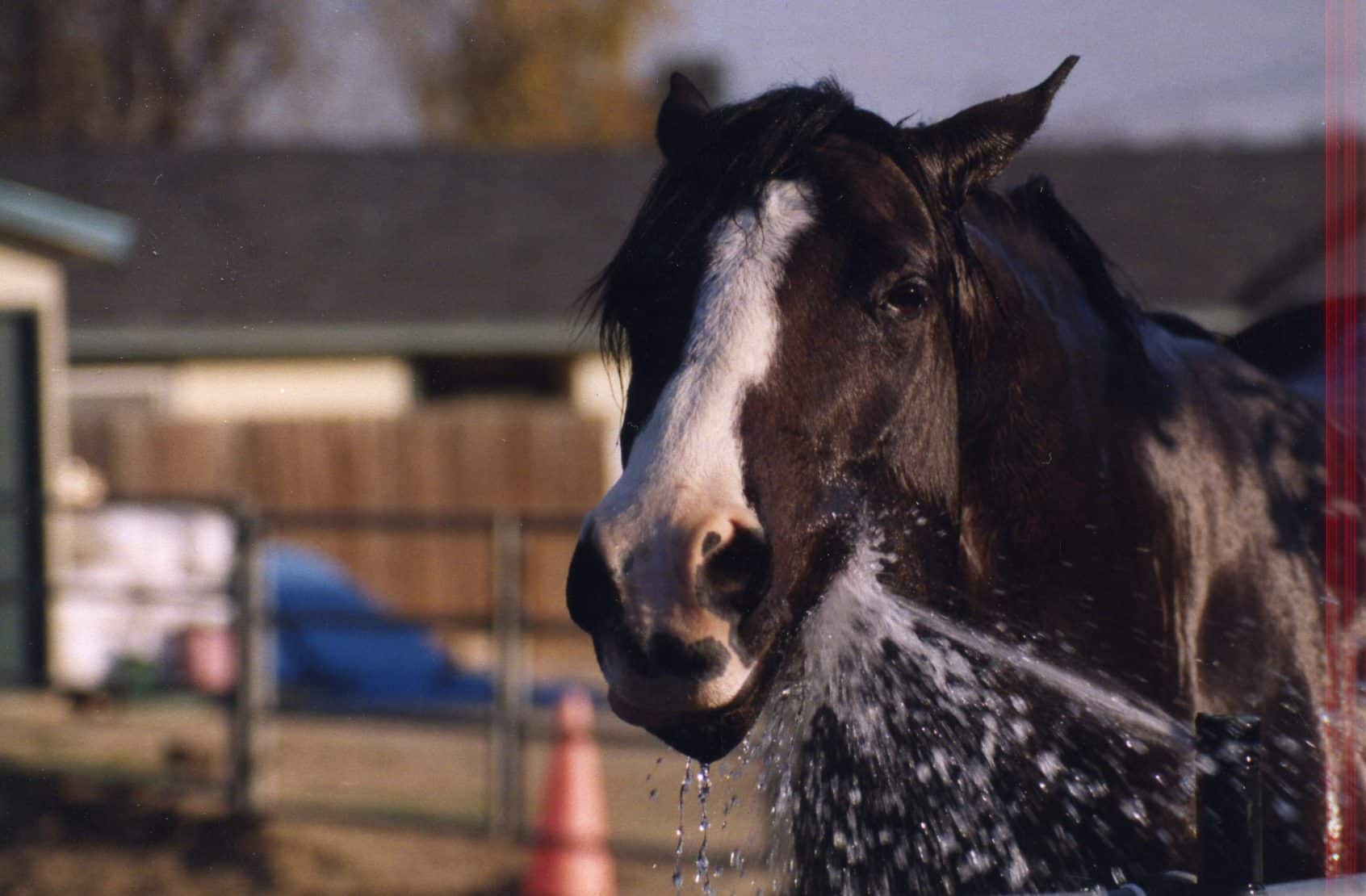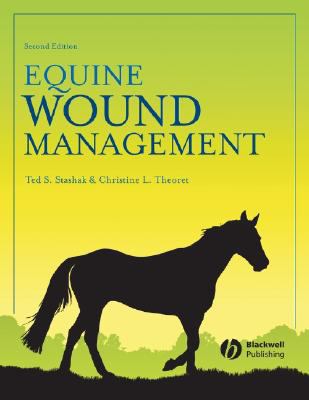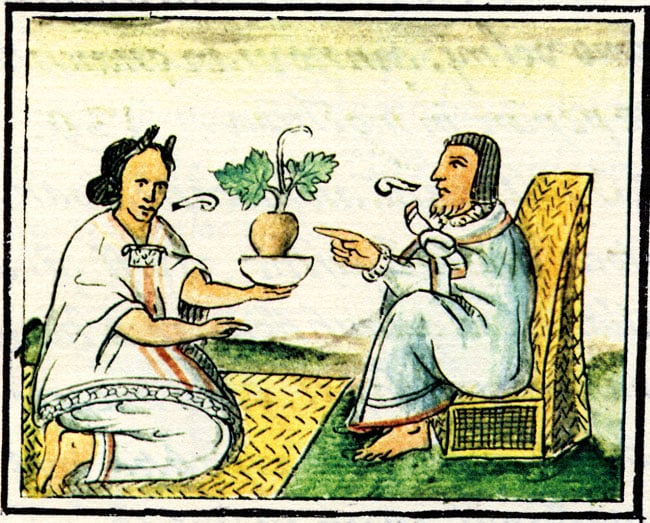 Medicine is always on the search for, “New and Improved.” I only bring this up because there’s a relatively new player in the, “Easy to give pain reliever” market for horses. The generic name of the drug is firocoxcib, but it’s sold – in a paste or a pill – by the trade name of Equioxx®. Or, as manufactured for dogs, it’s sold as Previcox© (more on that little bit of controversy in a few paragraphs). I figured it would be worth talking about, since it seems to have achieved some sort of cult status in some circles.
Medicine is always on the search for, “New and Improved.” I only bring this up because there’s a relatively new player in the, “Easy to give pain reliever” market for horses. The generic name of the drug is firocoxcib, but it’s sold – in a paste or a pill – by the trade name of Equioxx®. Or, as manufactured for dogs, it’s sold as Previcox© (more on that little bit of controversy in a few paragraphs). I figured it would be worth talking about, since it seems to have achieved some sort of cult status in some circles.
 First of all, let’s make sure we know what we’re talking about. Firocoxcib is one of a class of drugs known as nonsteroidal anti-inflammatory drugs (NSAID). They work by inhibiting a compound called cyclooxygenase (COX), which is a chemical formed in the chemical chain that results in the sensation of pain. There are many such drugs available for use in horses, including phenylbutazone (“bute”), flunixin meglumine (“Banamine®”), and ketoprofen (“Ketofen®”). NSAIDS are very effective medications for the treatment of pain and inflammation in horses. Since pain and inflammation seem to be a regular risk for horses as they age, or as they compete, these drugs are used a lot (such drugs are used a lot in people, too, of course).
First of all, let’s make sure we know what we’re talking about. Firocoxcib is one of a class of drugs known as nonsteroidal anti-inflammatory drugs (NSAID). They work by inhibiting a compound called cyclooxygenase (COX), which is a chemical formed in the chemical chain that results in the sensation of pain. There are many such drugs available for use in horses, including phenylbutazone (“bute”), flunixin meglumine (“Banamine®”), and ketoprofen (“Ketofen®”). NSAIDS are very effective medications for the treatment of pain and inflammation in horses. Since pain and inflammation seem to be a regular risk for horses as they age, or as they compete, these drugs are used a lot (such drugs are used a lot in people, too, of course).
COX comes in two forms that are important in pharmacology. The two forms are called – in a charmingly pedestrian way – COX-1 and COX-2. Cyclooxygenase-1 is a really important substance in the body. It’s not only involved in the sensation of pain, it’s also important for many of the horse’s body’s normal functions, including normal function of the horses gastrointestinal tract (the stomach, intestines, and such). Thus, while COX-1 drugs are very effective, they can have the occasional side effect, including, most notably, side effects on the horse’s gastrointestinal tract. That’s perhaps one reason why there seems to be this pervasive fear that if you give your horse a couple of scoops of bute powder, he’ll rapidly die from a bleeding ulcer. (Another reason why is that some people tend to worry too much, but that’s another matter entirely.)

COX-2 researcher
Given that there are side effects from COX-1 NSAIDs, a couple of decades back, intrepid phamacologists started looking for medications that selectively inhibit COX-2 while not affecting COX-1. Think about the chemical events that cause pain as a river. COX-1 and COX-2 are like tributaries of the river. Bute and such dam up one of the tributaries – COX-2 medications, such as firocoxcib, dam up a different one. Either way, less water gets into the river (I hope you get the idea). It was hoped that by blocking COX-2 you could end up with fewer gastrointestinal side effects, and still have an effective pain reliever. It turns out that that’s purported to be one of the much ballyhooed virtues of firocoxcib. If you really want to get into it, CLICK HERE.
 ASIDE: COX-2 inhibitors made a big splash in the human pain-relieving market a decade of so ago, for much the same reasons as firocoxcib may be used. That is, it was thought that they wouldn’t be so “hard” on the gut. Unfortunately, it turns out that while they may have been easier on the gut, they were a bit tough on the heart in some people; they caused strokes, too. As a result, Vioxx®. which was actually an effective drug, got pulled from the market. Happily, horses and dogs seem not to have cardiovascular side-effects.
ASIDE: COX-2 inhibitors made a big splash in the human pain-relieving market a decade of so ago, for much the same reasons as firocoxcib may be used. That is, it was thought that they wouldn’t be so “hard” on the gut. Unfortunately, it turns out that while they may have been easier on the gut, they were a bit tough on the heart in some people; they caused strokes, too. As a result, Vioxx®. which was actually an effective drug, got pulled from the market. Happily, horses and dogs seem not to have cardiovascular side-effects.
So let’s talk about the drug.
DOES IT WORK?
 Yes, it seems to be as effective as COX-1 drugs in relieving pain. The paste formulation of firocoxcib works about as well as the paste formulation of bute (NOT better). So, while firocoxcib is an effective medication, it is NOT a huge step up in relief of pain, when compared to other COX-inhibiting medications.
Yes, it seems to be as effective as COX-1 drugs in relieving pain. The paste formulation of firocoxcib works about as well as the paste formulation of bute (NOT better). So, while firocoxcib is an effective medication, it is NOT a huge step up in relief of pain, when compared to other COX-inhibiting medications.
ANOTHER QUICK ASIDE: Some individuals may have a better response to one medication than another. For example, on the rare occasion when I get a headache, I find that ibuprofen works better for me than does aspirin. I can’t explain it – I doubt if anyone really could. But it is possible that your horse might respond better to one NSAID than it does to another.
CAN YOU USE COX-1 AND COX-2 DRUGS TOGETHER?
I guess, “Can” and “Should” are two different questions, but while I guess it’s possible to give the two types of drugs together – and it would even make some pharmacologic sense to do so – you really, really shouldn’t. Why?
- If you give the two drugs together, you eliminate the potential benefits of COX-2 drugs. That is, if you’re worried about your horse’s GI tract, using the two medications together doesn’t make any sense.
- If you give the two drugs together, you increase the risk of gastrointestinal problems.
- If you give the two drugs together, you increase the risk of kidney problems.
So, while you can…. don’t.
 WHAT ABOUT SIDE EFFECTS?
WHAT ABOUT SIDE EFFECTS?
Well, there’s a bit of a fly in the side effects ointment, based on a study that was reported at the 2017 American Association of Equine Practitioners Meeting. As it turns out, horses that get firocoxcib can suffer from gastrointestinal bleeding, too. Perhaps not as often as horses that receive COX-1 medications, but firocoxcib is apparently not entirely free of gastrointestinal side effects. So, I guess we can lose some sleep over that.
WHAT’S PREVICOX®?
Until relatively recently, firocoxcib for horses was only available as a paste. Pastes for horses, as you surely know, are a sometimes convenient way to administer medication to horses. Sometimes, of course, the horse spits the paste out, or gives you a pasty shampoo, but that’s horses. Anyway, the paste was available, but it was relatively expensive.
 All the while, firocoxcib was being marketed to dog owners under the trade name of Previcox®. Dogs, with their very large canine teeth, may not entirely like having a paste shoved into their mouths. They seem to prefer taking pills, particularly when hidden in a bit of cheese, white bread, or such (at least according to my experience). Somebody noticed that the pills for dogs contained the same medication as did the paste for horses, but at a substantially lower price. Ever the thrifty bunch, horse owners started buying the dog pills and giving them either as a single pill, or, in an even more economical fashion, taking the stronger of the two dog pill formulations (227 mg), cutting them into four pieces, and giving the horse one of those pieces.
All the while, firocoxcib was being marketed to dog owners under the trade name of Previcox®. Dogs, with their very large canine teeth, may not entirely like having a paste shoved into their mouths. They seem to prefer taking pills, particularly when hidden in a bit of cheese, white bread, or such (at least according to my experience). Somebody noticed that the pills for dogs contained the same medication as did the paste for horses, but at a substantially lower price. Ever the thrifty bunch, horse owners started buying the dog pills and giving them either as a single pill, or, in an even more economical fashion, taking the stronger of the two dog pill formulations (227 mg), cutting them into four pieces, and giving the horse one of those pieces.
While this practice may have helped spike the sales of canine pills, it did nothing for the sales of equine paste, and the manufacturer was not happy. To be frank, the practice of giving a dog pill to a horse may not have been entirely legal (one could debate that) and it made the drug company unhappy, but people did it anyway. Thus, the manufacturer started marketing the same medication that was previously only available as a pill for dogs as a pill for horses, which is where things are now.
BOTTOM LINE?
 The bottom line here is that firocoxcib is an effective NSAID for horses. It works along a different path than do other drugs commonly used for pain relief in horses, but not necessarily a more effective path. It may have fewer side effects than other NSAID drugs, but side effects can occur. It definitely should not be used in combination with other NSAID drugs. It’s fine. It’s not a miracle.
The bottom line here is that firocoxcib is an effective NSAID for horses. It works along a different path than do other drugs commonly used for pain relief in horses, but not necessarily a more effective path. It may have fewer side effects than other NSAID drugs, but side effects can occur. It definitely should not be used in combination with other NSAID drugs. It’s fine. It’s not a miracle.







